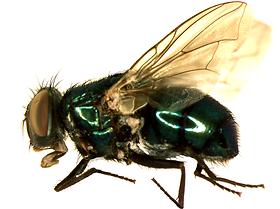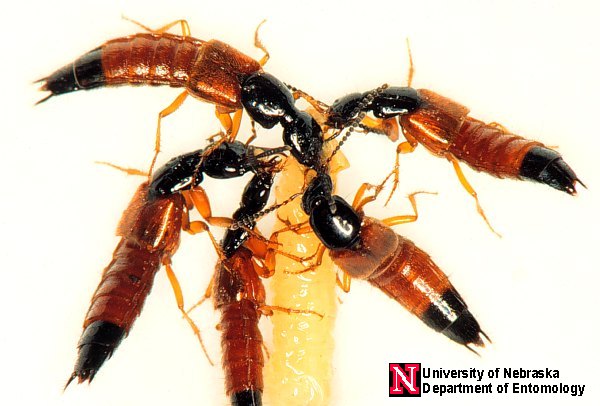Diagram of human skeleton
www.enchantedlearning.com
Hardening of the corpse
The stiffening of the corpse is called rigor mortis, it is between 30 minutes to 3 hours after death. This happens as the body muscles start to stiffen because of the lack of oxygen and blood. Sometimes, the hardening of the body may not occur if the surrounding temperature is too low, while it occurs in muscles that were active before death. Rigor mortis is most noticeable in the eyelids and jaws, after that, it spreads throughout the body in 6 to 12 hours, before it recedes again in another 6 to 12 hours. However, if the body has been left alone for a long peiod of time since death, the evidence of level of stiffening will not be that useful.
Skin colour
From about 48 hours onwards, the colour of the skin can help to predict the time of death. Bacteria starts to breed on the skin of the victim, giving it a greenish colour. It begins in the lower stomach area, before spreading out until it reaches the hands and feet. The skin will have a marble-like appearance 4 to 7 days after, as the veins become closer to the surface and it becomes more obvious.Blood pooling
 The pooling of blood is known as hypostasis, it is completed in up to 6 hours after death. The skin is pink and red, as blood stops flowing and it settles on the lowest part of the body. The location of the blood pools can determine the upright position of the body during blood pooling, thus it helps to predict the death manner.
The pooling of blood is known as hypostasis, it is completed in up to 6 hours after death. The skin is pink and red, as blood stops flowing and it settles on the lowest part of the body. The location of the blood pools can determine the upright position of the body during blood pooling, thus it helps to predict the death manner.Blood pooling in a corpse
www.flickr.com
Diagram of digestive system:mouth>oesophagus>stomach>small intestine(3hrs later)>large intestine(6 hrs later)
www.daviddarling.info
If the victim's small intestine is empty, it shows that the victim's previous meal was 8 hours before death.Chewed food will then be passe through the oesophagus first then down to the stomach within seconds. 3 hours later, the food will leave for the small intestine. After 6 hours, the food will be halfway through the small intestine and is beginning to move through the large intestine. However, the digestive process may be affected by illness, drugs, and fear.The correct level of food digestion also corresponds to its location. If a clever murderer wants to attempt to bring the victim's last meal forward so as to trick the investigators, he would stuffed processed food into the victim's mouth. However, the food collected in the stomach will be less digested than normal, since the periodic motion stops after death. The food may be broken down slightly with the help of stomach acids, but some abnormal problems will be detected. in older people or sick people, the process food digestion may alters.
Insects
 |
| a blowfly |
~0-3 days- proteins and carbohydrates are broken down in the body [e.g.Blowflies:Bluebottle flies]
~4-7 days- abdomen is inflated because of the gases inside , body starts to decay [e.g.Fly larvae and beetle:Rove beetles]
 |
| rove beetles |
~19-30 days- decaying body reaches the stage, will be dried out.In wet and humid conditions, the body will be sticky and dry. [e.g.beetles and mites: Springtail beetle,acari]
| an acari |
Source:
http://library.thinkquest.org/04oct/00206/autopsy.htm?tql-iframe
https://www.google.com.sg/search?hl=en&site=imghp&tbm=isch&sa=1&q=acari&oq=acari&gs_l=img.3..0l10.426619.427185.8.427471.5.5.0.0.0.0.71.248.5.5.0...0.0...1c.1.5.img.xICv4FUrlic&biw=1120&bih=639&cad=cbv&sei=tOs7UdXAMM3prQeK5YHIDw#hl=en&site=imghp&tbm=isch&sa=1&q=rove+beetles&oq=rove+beetles&gs_l=img.3...8874.9652.2.9730.4.4.0.0.0.0.0.0..0.0...0.0...1c.1.5.img._6jELqC3EKc&bav=on.2,or.r_qf.&bvm=bv.43287494,d.bmk&fp=601004e9de3eb21c&biw=1120&bih=639
https://www.google.com.sg/search?hl=en&site=imghp&tbm=isch&sa=1&q=acari&oq=acari&gs_l=img.3..0l10.426619.427185.8.427471.5.5.0.0.0.0.71.248.5.5.0...0.0...1c.1.5.img.xICv4FUrlic&biw=1120&bih=639&cad=cbv&sei=tOs7UdXAMM3prQeK5YHIDw
http://www.oisat.org/control_methods/natural_enemies/predators/rove_beetles.html


No comments:
Post a Comment